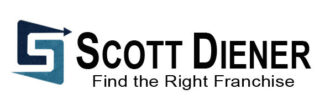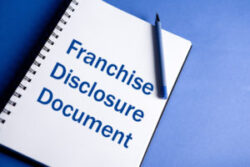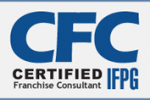Back in 1978, The Federal Trade Commission stepped in and legally required all franchisors to give each potential franchisee a document at least 14 days before you can buy a franchise. This disclosure is called The Franchise Disclosure Document or FDD. Its primary purpose is to provide a prospective franchise buyer with uniform information to compare one franchise over another. This comparison information is obtained during the franchise Disclosure (FDD) document review process.
A franchise is a business operating under the same model, trademark and brand as a larger company. Unlike those who start a business from scratch, franchisees benefit from knowing that the franchise has a proven business model and an established brand. They want to leverage the brand awareness and support of the franchisor in their business to mitigate their risk of starting from scratch. That support, and awareness is valuable, and it ultimately serves as the basis for ongoing royalty payments.
The FDD explains your responsibilities as a franchise owner and the responsibilities that the franchise company has to you in a predefined template that has 23 sections the Federal Trade Commission requires. The FDD helps prospective franchisees weigh the costs and benefits of purchasing a specific franchise. The FDD does not explain the ‘how’ you will achieve success as a business owner, that comes from training. The bulk of the FDD concerns itself with details regarding support and provides a solid overview of what you get once you become a franchisee. While it can be dry reading, The FDD is the most important and valuable document in your evaluation of a franchise!
From front to back, the FDD contains that following essential information:
-
Corporate Information – including information about the corporation, its history, its officers and its audited financial statements.
-
Disclosure – The disclosures are the heart of the FDD. There are many different disclosures including a list of current franchise owners, a list of owners who closed or terminated their agreements, a summary of all fees charged by the franchise company (or that may be charged in the future), itemized investment required to open and operate the business….and more.
-
Franchise Agreement – A copy of the current franchise agreement is included in the FDD. This is the document that you will ultimately sign if you and the franchise leadership decide to move forward together.
-
Acknowledgement of Receipt – Franchisors are required to keep a record documenting the date you received the FDD. You must have this document at least 14 days before signing a franchise agreement. In other words, if there is no receipt you cannot be awarded the franchise!
To start the franchise disclosure document (FDD) review process, first print it, and place it in a 3-ring binder so note taking is done in one place. This includes the use of highlighting and the use of assorted color pens to identify and answer areas of interest or concern(s). Don’t use sticky notes to write your answers because they fall off over time. A representative from the franchise company will set aside time to walk you through the document and address your questions and clarify the information to your satisfaction. If the franchisor leadership team can’t satisfy your concerns, thank them for their time and keep searching! Later, if you decide to move forward, you can hire a franchise attorney to complete a thorough review on your behalf.
Outlined below is a brief explanation of what franchisors include within the 23 sections:
Items 1-4: Paints a picture of the franchisor and who’s responsible for directing and operating it.
- Item 1: History of Franchisor including parent companies, predecessors, affiliated entities, and companies the franchisor acquired in the past 10 years.
- Item 2: Business Experience of the management team and operational history of the business
- Item 3: Litigation. Covers all litigation, both current and past, going back ten years.
- Item 4: Bankruptcy. Discloses any bankruptcies – franchisor or its founder.
Items 5-7: Most prospective franchise candidates care about two things: how much does it cost and how much money can I make? The next 3 sections cover costs you’ll have to pay:
- Item 5: Initial Upfront Fees required before the franchise opens including the franchise fee itself, multi-unit fees, and necessary supplies/materials.
- Item 6: Other Fees includes a table that outlines other ongoing fees paid to franchisor such as the royalty, training fees (if applicable), technology fees, marketing fees, renewal fees.
- Item 7: Estimated Initial Investment outlines the total initial investment required, combining the initial fees disclosed in Item 5 with estimates of construction/leasehold improvement costs, furniture, fixtures, equipment, signage, computer systems, rent deposits, insurance deposits, professional fees, grand opening expenses…you name it. It’s meant to give you a solid estimate of the total cost of opening a franchise location. Working Capital typically covers the first 3 months but make sure you read the details, so your cash forecasting meets your needs.
- Item 8: Sources of products and services: Lists expenditures franchisees will make and required sourcing of purchases which is particularly important if you’re in a restaurant or retail concept.
- Item 9: Franchisee’s obligations: Wonderful place to start since it acts as a table of contents telling you what’s covered and where to find it. Common obligations including site selection and development, fees, compliance with standards, ongoing purchases, maintenance, appearance and remodeling requirements, insurance, advertising, management, records and reports, inspections and audits.
- Item 10: Financing: Franchisors aren’t required to offer a financing option and if offered, the terms are not set in stone. Your consultant can also suggest sources to find a small business lender and explore other ways to fund your business such as using your retirement funds.
- Item 11: Franchisor’s assistance, advertising, computer systems and training: This section describes how much support franchisor will provide day-to-day operations expectations.
- Item 12: Territory outlines how the franchisor defines territory and the protections provided to franchisees
- Items 13-14: Intellectual property is identified such as registered trademarks, patents or copyrights
- Item 15: Your Obligation to participate in the actual day to day operation of the franchise business
- Item 16: Restrictions on goods or services the franchisee can sell.
- Item 17: Renewal, termination, transfers and dispute resolution. A table summarizes your franchise rights or if the terms are subject to change at the time of renewal.
- Item 18: Public figures who have control of the franchise system, use their image to endorse the franchise or invest in the franchisor so you want to know how money is used. e. celebrities, sports hero’s….
- Item 19: Financial performance representations can include either historical or projected representations of how current and past franchises have performed financially. Representations can be a chart, table or mathematical calculation to represent franchise earnings, but they are not required.
- Item 20: Outlets and franchisee information includes five tables showing the number of franchised & company-owned locations in the past three years including contact information for current and former franchisees so you can interview them to validate franchisor’s support, ask about their financial performance before deciding
- Item 21: Franchisor “audited” financial statements from the previous three fiscal years
- Item 22: Contracts: includes copies of the actual franchise agreement and other contracts you will be asked to sign.
- Item 23: Receipts: Franchisee signs one copy to indicate they received the disclosure document.
By understanding what to expect from the FDD, and where to find the franchising information you are looking for, you will be able to work your way through the document efficiently and effectively. As Franchise Coach can help you through the franchise document disclosure (FDD) review process to make sure that you are asking the right questions to get accurate comparison information. Please see this article for more information about franchise consultants, and feel free to connect with Scott Diener to to discuss more dynamics about researching franchise opportunities.




